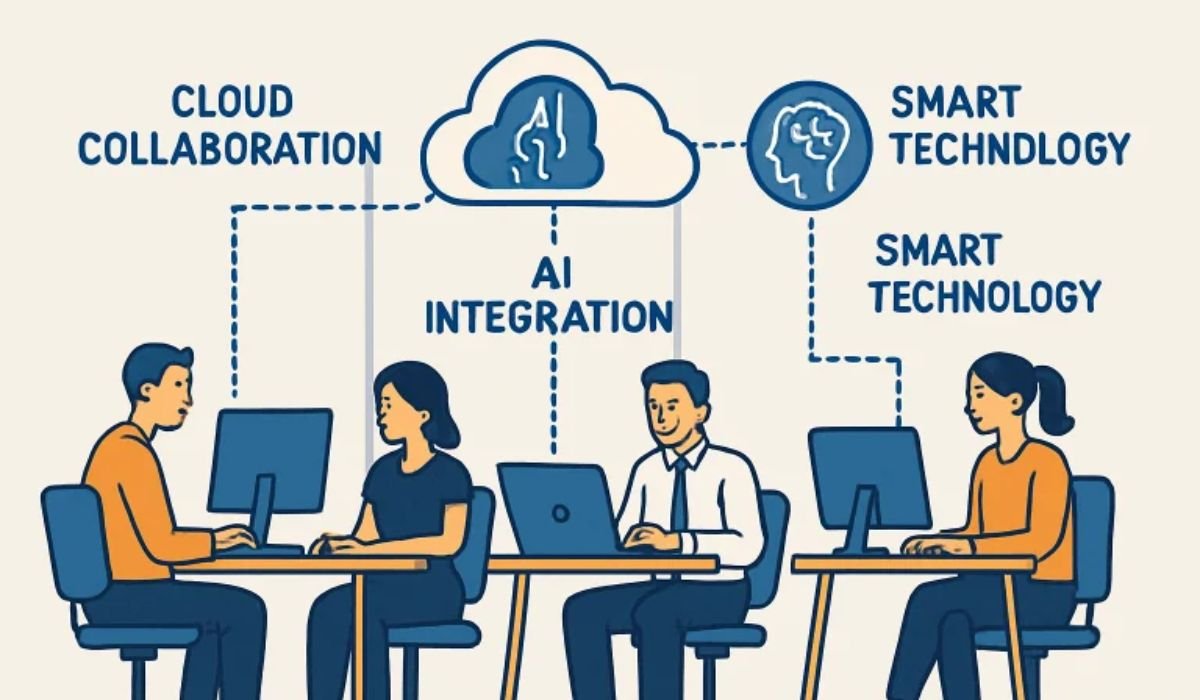Modern workplaces that prioritize digital innovation establish more resilient operations and show greater business agility. From leveraging cloud-based collaboration tools to integrating artificial intelligence and enhancing workplace security, comprehensive IT strategies help overcome traditional workplace constraints. Investing in the right solutions supports immediate operational needs and long-term growth goals.
Companies of all sizes recognize the need to integrate advanced IT solutions to maintain productivity, foster collaboration, and ensure a secure work environment. With the rapid pace of digital transformation, selecting and implementing the right IT Strategy Solutions is critical to organizational success. Smooth technology adoption not only empowers staff to work more efficiently but also allows businesses to respond quickly to changing market demands.
Embrace Cloud-Based Collaboration Tools
Cloud platforms like Microsoft Teams, Google Workspace, and Slack are transforming business communication and collaboration, removing location barriers and supporting hybrid and remote work. These tools enable file sharing, task tracking, and real-time messaging, creating a central hub for project management and daily coordination. Features like scheduling, videoconferencing, and document management help organizations stay efficient, especially in fast-paced, distributed workforces. Cloud-based tech offers the flexibility and continuity needed for competitiveness.
Implement AI and Automation
Artificial intelligence and workflow automation are quickly becoming foundational components in modern organizations. AI-driven tools such as intelligent virtual assistants can address routine IT queries, provide timely information, and manage repetitive administrative tasks, allowing employees to focus on higher-value work. Additionally, advanced automation platforms analyze large sets of data to produce insights that inform smarter business decisions, helping organizations respond proactively to operational bottlenecks and shifting priorities.
According to the annual “State of AI in IT” report, nearly 45% of organizations report significant benefits from applying AI and automated analytics, especially when synthesizing diverse data sources for more informed decision-making. As these technologies mature, their potential to impact everything from customer support to data security expands, reducing human error and ensuring consistency in everyday operations.
Prioritize Cybersecurity Measures
As IT systems become central to business, adopting strong cybersecurity is essential. Frameworks like NIST provide a blueprint for risk assessment, threat detection, and protection. Regular security audits, employee phishing training, and multi-factor authentication are key defenses. Industry analysis shows cyber tactics evolve, making it crucial for organizations to review and improve their security. A proactive, layered approach keeps assets safe and ensures regulatory compliance.
Design Smart Office Environments
Reimagining workplaces with smart tech creates adaptive, energy-efficient spaces that boost comfort and productivity. IoT features like sensor-based lighting and climate control automatically adjust to occupancy and preferences, ensuring optimal conditions while saving energy. Hot desking, smart conference rooms with digital whiteboards, and AI cameras support hybrid work, blending in-person and virtual interactions. Smart workplace design helps organizations maximize space, cut costs, and adopt flexible setups for evolving team needs, turning traditional offices into connected, creative hubs.
Provide Continuous Training and Support
Effective technology integration relies on empowering employees to confidently adopt new tools through regular training like workshops, webinars, and online courses that build digital fluency and promote skill development. Dedicated IT support channels in messaging platforms provide instant help and reduce disruptions. Feedback methods like pulse surveys or suggestion forms help organizations identify needs for more training or feature updates, ensuring staff feel supported and engaged, fostering a positive technology adoption culture.
Foster a Culture of Innovation
Encouraging openness to new ideas and recognizing teams experimenting with emerging technologies fosters innovation. Leadership should model curiosity and support digital experimentation, emphasizing that innovation is a priority. Recognizing successful tech initiatives motivates employees to share insights, creating an environment where technology is seen as an enabler rather than an obstacle. Leadership’s role in supporting ongoing learning and providing resources helps the company thrive amid disruption.
Monitor and Evaluate Technology Integration
Consistent evaluation is essential to make sure implemented IT solutions align with evolving business goals. Organizations should develop clear key performance indicators (KPIs) related to productivity, employee satisfaction, and technology performance. Regularly gathering feedback enables decision-makers to gauge impact, identify challenges, and refine their approach for maximum benefit. For more on developing effective assessment strategies,
Conclusion
Integrating IT solutions into the modern workplace is an ongoing journey, shaped by continuous innovation and organizational commitment. By strategically adopting cloud-based tools, AI, robust cybersecurity, and smart workspace designs, companies empower their teams to adapt, collaborate, and excel. Thoughtful investment in employee training and technology monitoring ensures these gains are sustainable, preparing organizations for success amid rapid digital transformation.
You may also like: Revo Technologies Murray Utah: Delivering Innovation and IT Solutions











